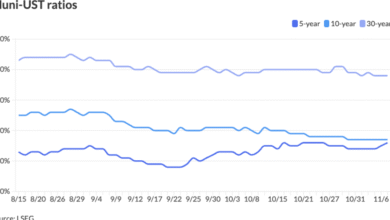A Closer Look at the Growth of Private Credit Markets

Today, both high yield bonds and leveraged loans are commonly used as a tactical or strategic allocation in client portfolios. Private corporate loans with floating coupons have served as another source of financing and liquidity for corporations and have experienced similar growth over time, reaching a size comparable to the other two subcomponents of the leveraged credit markets and becoming more widely considered as a strategic allocation in fixed income portfolios.
Private Credit Growth Has Been Amplified by a Transfer of Risk
Middle market companies have existed for a very long time. These borrowers needed financing twenty years ago and they continue to need financing today. We estimate that the middle market is made up of nearly 200,000 companies that represent one-third of the private sector gross domestic product (GDP) and would rank as the 4th largest economy in the world behind the US, China, and Japan. In the past, it was largely regional/commercial banks doing the lending, however, due to banking consolidation, larger banks prefer to arrange financing for larger companies, thereby generating higher fees. Banking regulation has also altered the lending landscape as capital requirements have made banks less willing and able to make those same loans. As a result, non-bank lenders are filling the void. To be sure, this is not new risk, instead it’s a transfer of risk from banks to asset managers and their clients.
What’s more, it’s also a transfer of risk from the liquid public high yield and bank loan, also known as leveraged loan, markets to private markets as larger borrowers who have historically and exclusively financed themselves through the capital markets are now using the private credit option. COVID-19 and the regional banking crisis following the failure of Silicon Valley Bank in 2023 also supercharged growth in private credit. In both instances, public capital markets retreated; companies that still required financing, including larger firms that had historically borrowed in the public markets via large investment banks, turned to private markets for capital, indicated by the increase in $1 billion private credit deals over the last few years in Figure 2.






